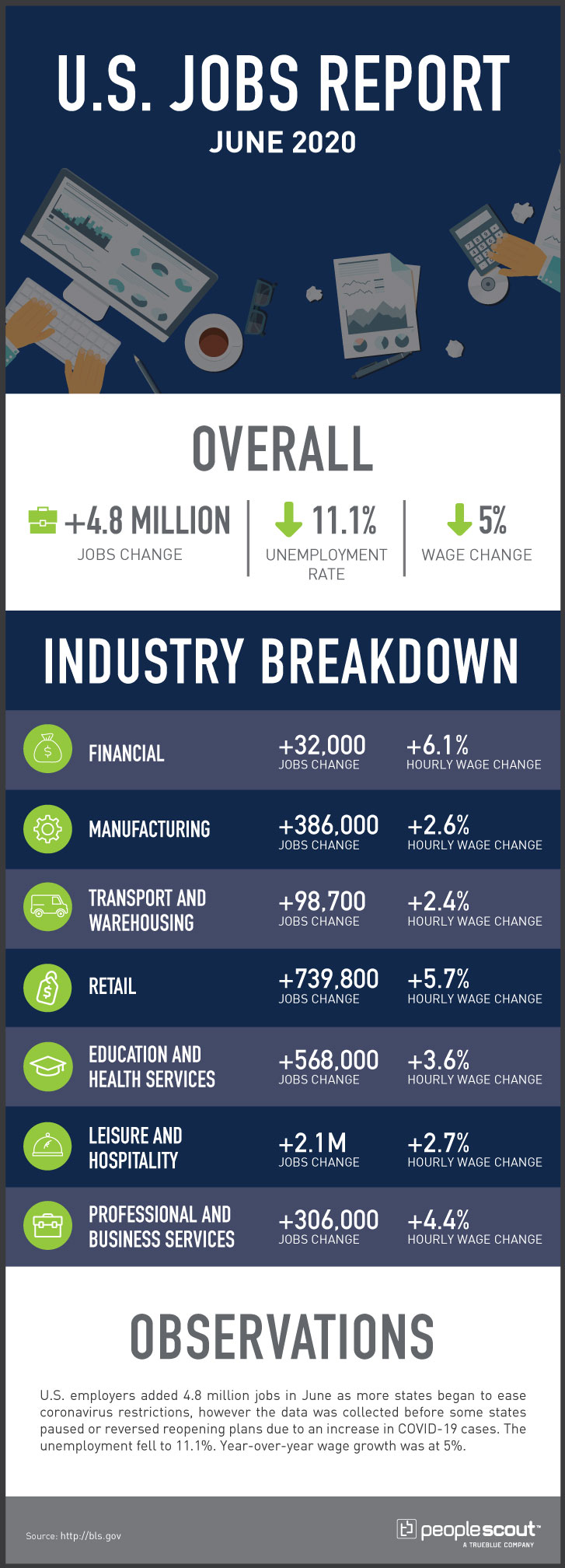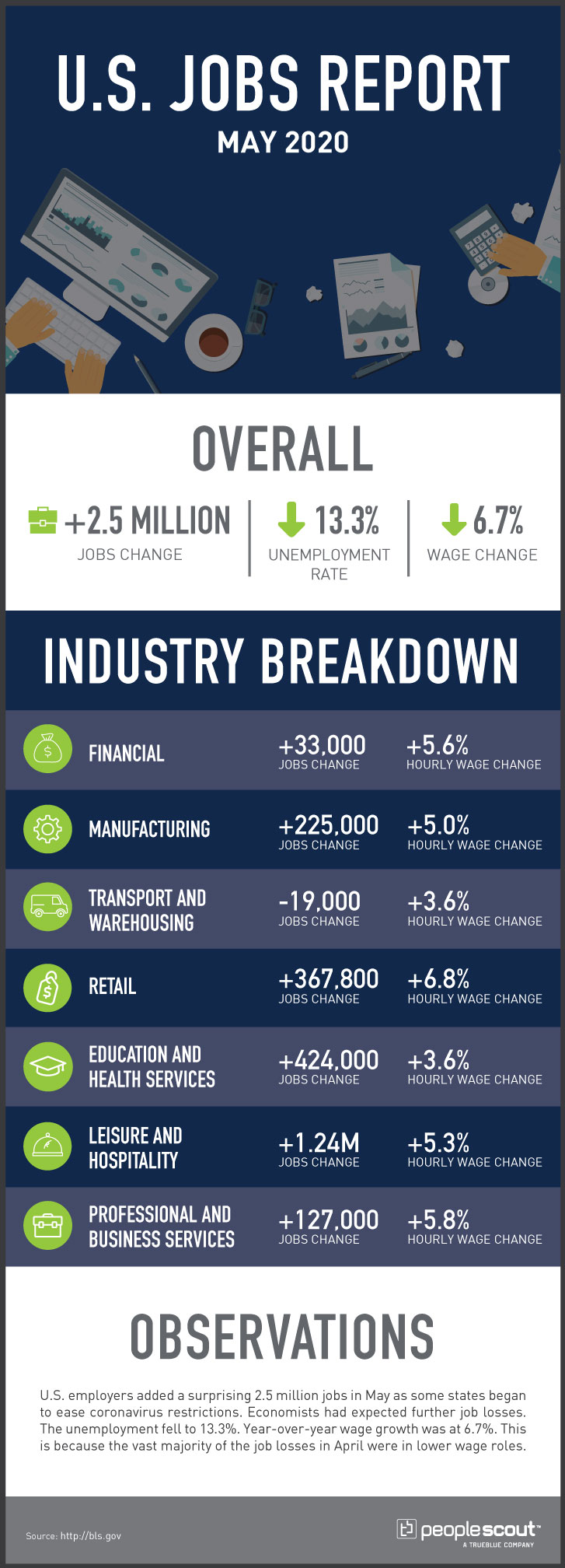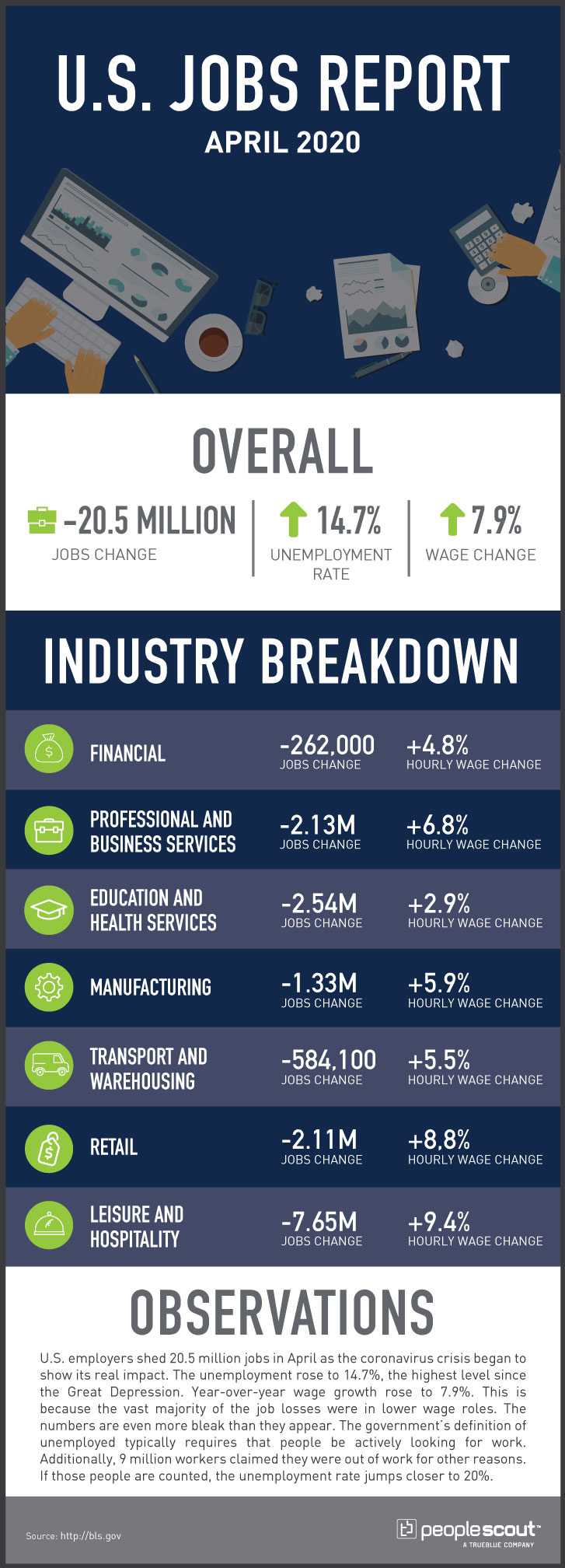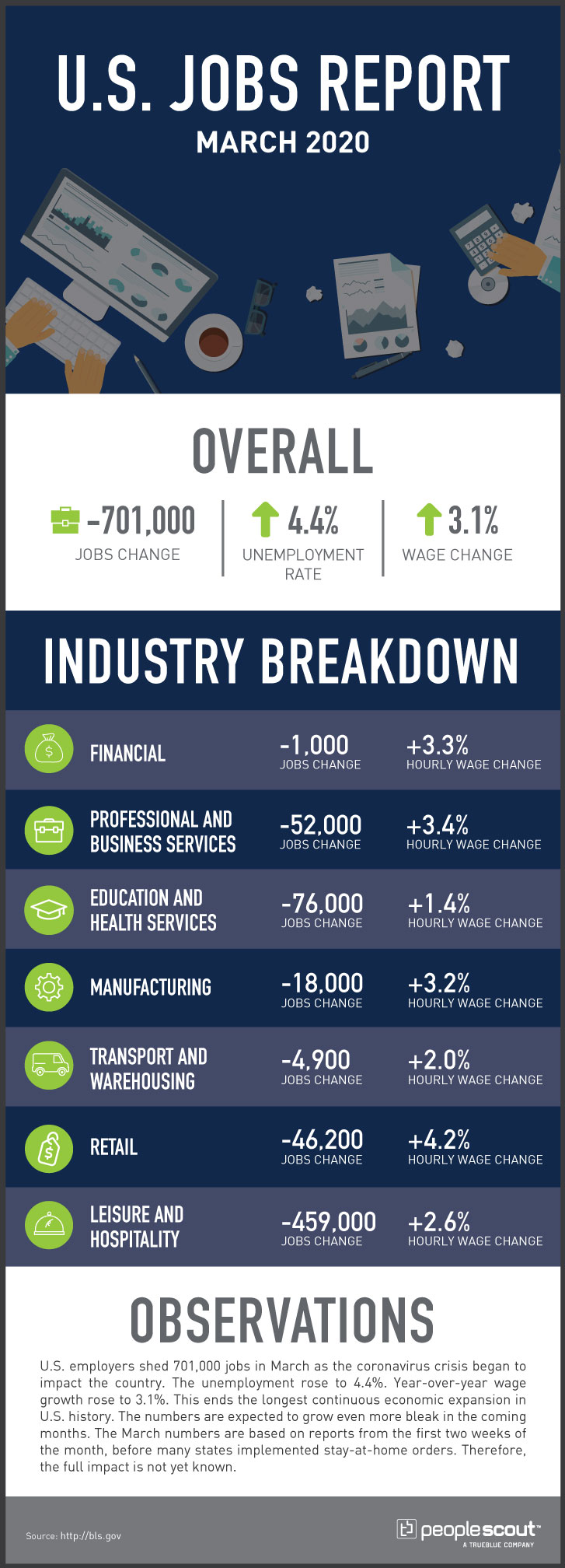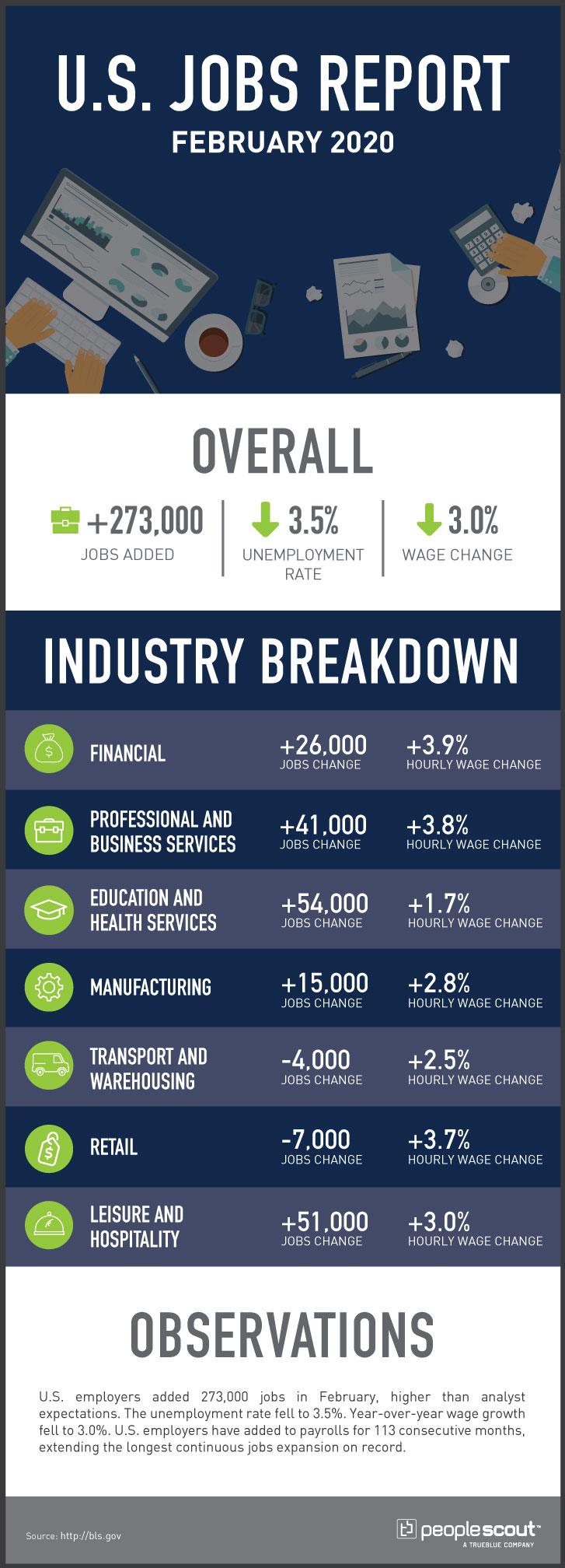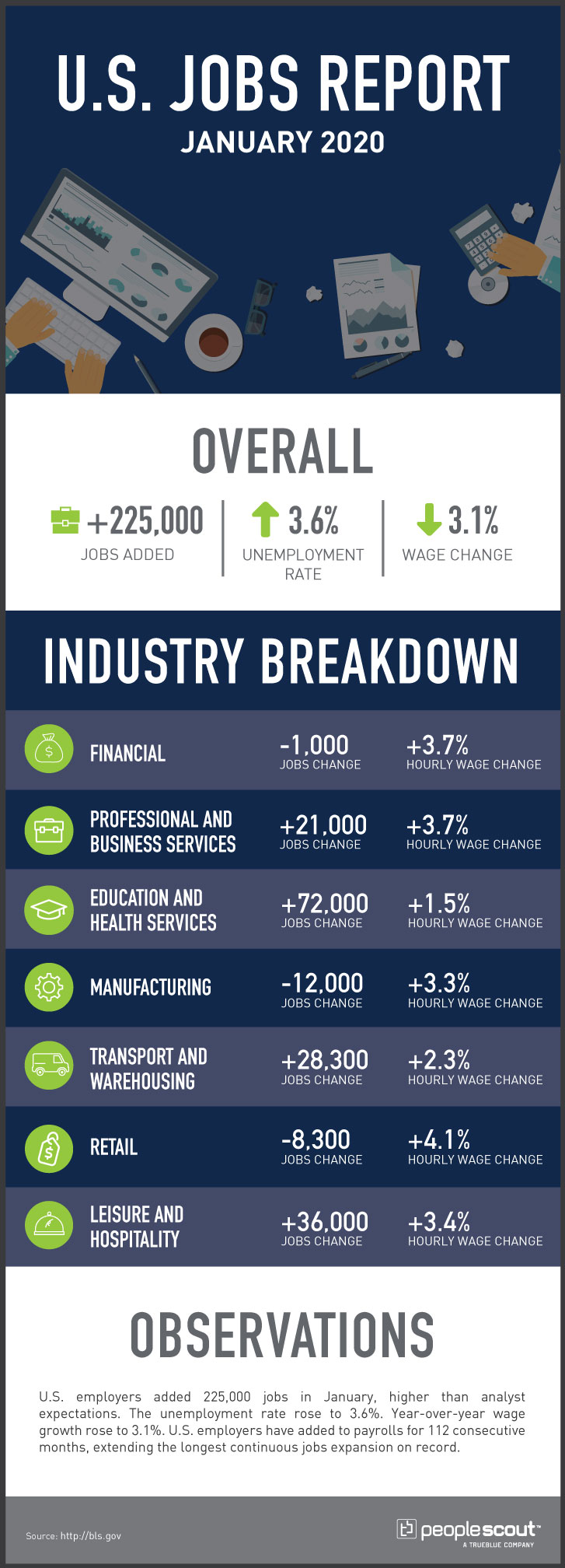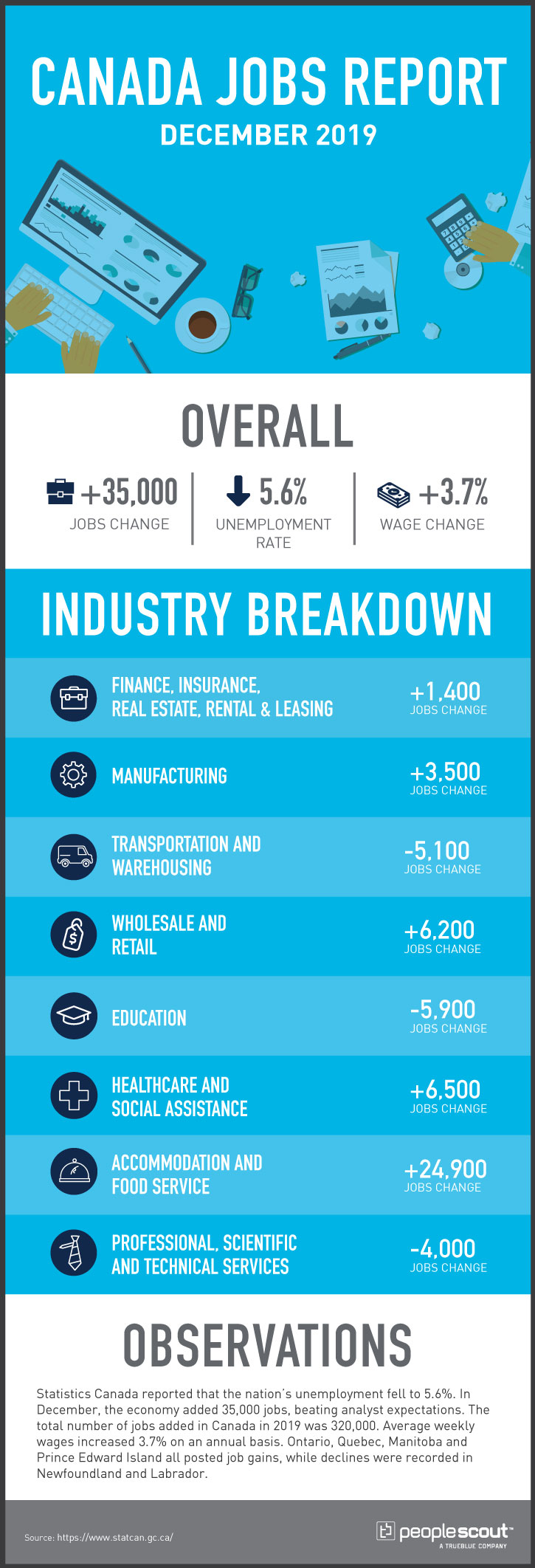Every talent acquisition professional is kind of an economic expert. In the process of filling positions, you become aware of local unemployment levels, current rates of compensation, and the competitive landscape in the sectors and markets in which you work. And, while understanding these specific conditions may be essential aspects of successful talent strategies, there are always larger economic forces at work. In this article, we cover three of economic trends and their impact on Talent Acquisition in 2020.
Understanding these economic trends can help develop an effective workforce strategy. To illustrate this point, PeopleScout has identified three economic trends that will affect talent acquisition and workforce management in 2020 – and potential ways to respond to the challenges and opportunities they bring.
Trade Disruption & Uncertainty
Uncertainty over trade due to Brexit,
ongoing trade disputes between the U.S. and key trading partners, and other
global commerce issues dominated the headlines in 2019. How will these
yet-to-be-resolved issues affect talent acquisition?
Flexible Workforce Planning
Imagine planning a budget without knowing the future costs of goods and services. Due to current uncertainty over trade, this is the dilemma that many enterprises are facing. The imposition of tariffs in the U.S.-China trade dispute has caused shifts in both the price and availability of products, according to The New York Times. Uncertainty over whether Brexit will happen – and, if it does, what the consequences will be on nearly every aspect of the UK economy and other nations – remains uncertain. One way to respond to uncertainty is to make flexibility a key component in workforce planning. Flexible workforce planning can include contingent staffing, sourcing strategies that promote rapid onboarding and employee cross-training in anticipation of potential downsizing.
Dig Deeper
PeopleScout Webinar: Using Data to Optimize Your Recruiting Process and Employer Brand
Sourcing Candidates from Alternative Talent Pools
While low unemployment still
characterizes many of the world’s leading economies, trade disruption has also
led to some job losses and displacement. For example, in Great Britain, a
number of companies have closed, moved or are planning to, as reported by Metro
in the UK. In both the U.S. and the UK, the manufacturing sector has seen job losses due to
tariffs and trade uncertainty. Fortunately, many of those who work in
manufacturing possess transferrable skills that can be used in other industries.
Employers that can identify and attract this newly available source of talent
will have a competitive advantage in tight labor markets.
The Migrant Workforce & Shifting
Talent Landscape
The era of growing immigration to many
advanced economies has been disrupted. The Guardian reports that thousands
of European Union nationals have left the UK since the 2016 Brexit referendum,
in large part due to the uncertainty over their legal status after an eventual
exit from the EU. And, in the U.S., a tightening of available visas and
selective immigration bans have caused the number of legal immigrants to plummet.
On the other hand, 29% of Australia’s population is foreign-born, but the
economic growth in many Asian countries – the source of much of Australia’s
immigrant population – has contributed to its decline in net migration in
recent years.
Know the Affected Sectors
One important way for employers to
respond to changing immigration patterns is to know which jobs are most affected
and to plan accordingly. The reality is that immigrants comprise a significant
portion of workers in a range of sectors. For example, nearly one-third of hotel workers in the U.S. are
immigrants, and more than one in 10 healthcare workers in the UK are non-British nationals (half of these are from the EU),
according to the Office for National Statistics. Understanding the sectors and
markets that are affected by the falling rates of available talent from abroad
may play an increasingly important role in developing effective talent
acquisition strategies.
Talent Without Borders
The pool of available talent is
exponentially expanded when work can be done outside of a fixed location.
Advances in technology and communications have greatly reduced the need for
many processes to take place in brick-and-mortar workplaces. For this reason,
recruitment strategies may increasingly include a review of job descriptions to
determine which positions can work from virtual locations, including those that
are abroad. By doing so, employers can move beyond the constraints of limited
talent pools and the wage pressures that tight labor markets generate.
OK, Boomer?
According to Glassdoor’s Chief Economist,
Dr. Andrew Chamberlain, baby boomers, born between 1944 and 1964, are now the
fastest-growing segment of the U.S. workforce. Dr. Chamberlain notes that “A ‘gray
wave’ of senior citizens will be impacting the workforce in coming years, both
in the United States and the United Kingdom.” In Canada, the percentage of
workers aged 55 and older more than doubled in a little more than two decades; they
are now more than one in five of all Canadian workers. Similarly, the number of
Australians aged 65 and older who participated in the workforce in 2018 was 13%,
compared to only 8% in 2006. And, in New Zealand, 22% of retirement-age people
worked in 2016, an 87% increase in just 10 years.
Candidates with a Silver Lining
Given these striking statistics, an increasing number of applications from older candidates should be expected. In addition to the talent that these older candidates bring in their own right, they also help employers adopt a holistic approach to upskilling.
Take the case of a recent college
graduate who has strong technical skills, but lacks industry knowledge and even
critical soft skills, such as effective communication. These deficiencies can
be offset by pairing this new hire with a seasoned industry veteran. The
ensuing mentoring can go both ways; a tech-savvy new hire can help an older
worker who may be challenged in this area, while the seasoned worker can guide
and instruct the younger employee on important industry knowledge and work
skills. This symbiotic pairing can also become an important element in an
enterprise’s succession planning strategy.
Partnering for Success
Responding to economic trends can be
daunting for those under constant pressure to fill positions and manage talent.
However, tracking newly available workers due to shifting tariffs and treaties,
knowing how to find candidates in unknown and far-flung locations, and
navigating the process of recruiting from a broad range of age groups may seem
overwhelming to even the best-equipped team of talent professionals. This is
precisely why leveraging the expertise and resources of a talent acquisition
partner can be the deciding factor for success in a complex and rapidly
changing economic environment.
